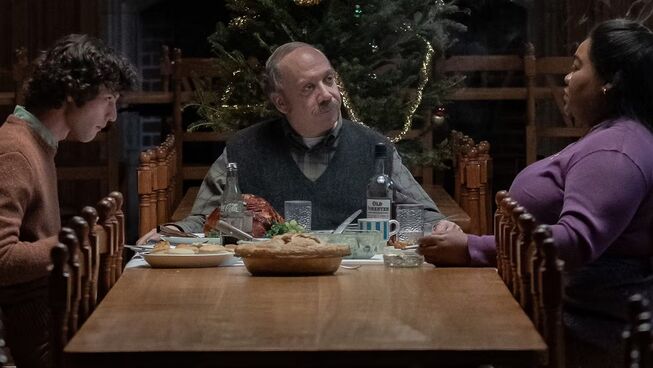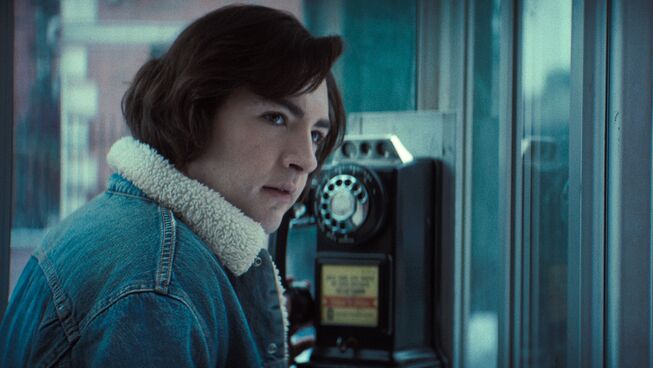The Holdovers
Topics

⭐️ ⭐️ ⭐️ ⭐️ (out of 5)
Something about the 1970s has made this decade come back into vogue. This era had a stark and raw aesthetic, and colour was used uniquely in that decade. This palette of muted hues, sepia tones, and bell bottoms is the canvas that director Alexander Payne (Downsizing, Sideways) uses to convey his latest coming-of-age story starring Paul Giamatti (Billions) as long-suffering history professor Paul Hunham.
Barton Academy is a New England boarding school that caters to the rich who want their children to attend the best American universities and to students who struggle to make it anywhere else. As a former student of the respected institution, Professor Hunham resides on campus and has become jaded by the lack of motivation of the young men who sit before him. This disdain leads him to fail a primary donor’s child, and as a form of punishment, the principal puts him in charge of the holdovers. These students left on campus during the holidays are meant to board together and study during the break. Angus Tully (Dominic Sessa) had his heart set on spending time with his family, but he is left to make the best of his time on campus. Along with four other students, they are all fed by cafeteria administrator Mary Lamb (Da'Vine Joy Randolph), who is grieving the recent death of her son, who gave his life in Vietnam. All have reasons for not remaining at Barton, but these scenarios can lead to unique connections that may change all of their lives.
What is noticeable from the opening credits is how Payne capitalises on the visual and cultural atmosphere of the early ‘70s. From the crackling in the audio to the muted textures of the wardrobes, the story bathes the viewer in a bygone era that manages to be unattractive and beautiful simultaneously. This spills over into the dialogue that had less concern with people’s sensitive dispositions and more to do with the culture change occurring from within and outside the learning institution. Between the tensions of the Vietnam War and the awkwardly functional furniture, everything within the film screams the transitional season for the world and the film’s characters.
The performances can be described in the same way as charming as they are unpleasant in their delivery. Paul Giamatti leans into his disquieting looks to embody the bitter teacher who cares more for others than he is willing to admit. His understated and caustic style is perfectly set against the angry and rebellious manner of Dominic Sessa. All the while being unexpectedly balanced out by the quietly sad and strong character of Da'Vine Joy Randolph. Separately, they would need more time to garner notice. Yet, as an ensemble, they bring a marvelous mix that may need to be more attractive to look upon. Alexander Payne manages to get some of the year's best performances set in the perfect setting for the tale to come to life.
The Holdovers is an unexpected joy that may have a different aesthetic appeal than many other stories. Still, the beauty is found under the surface, and the charm will come upon the viewer without expectation. It's a rare gem worth seeing this holiday season.
REEL DIALOGUE: Why is there such a stigma with mental health?
One unexpected element within this screenplay was the inclusion of a discussion on the importance of addressing mental health issues. Most characters deal with one or more conditions, but this era was one in which people chose to keep this topic behind closed doors.
Yet, despite the modern advancements and education, people still have a hard time knowing how to respond to the topic of mental illness. It is not new to society; throughout the Bible, there are references to individuals who struggle with these internal challenges. The realities portrayed in the Bible help to show that the answers can be found in the words of Jesus. God can help through the journey, and know that seeking help is better than struggling alone.
Casting all your anxieties on him, because he cares for you. - 1 Peter 5:7
The word becomes film
Russ Matthews' new book is a modern-day parable that introduces a radically easy way of talking about God’s story
If you order the book today you will also receive a complementary study guide that is only available with the purchase of the book (Print or ebook)
More like this ...












